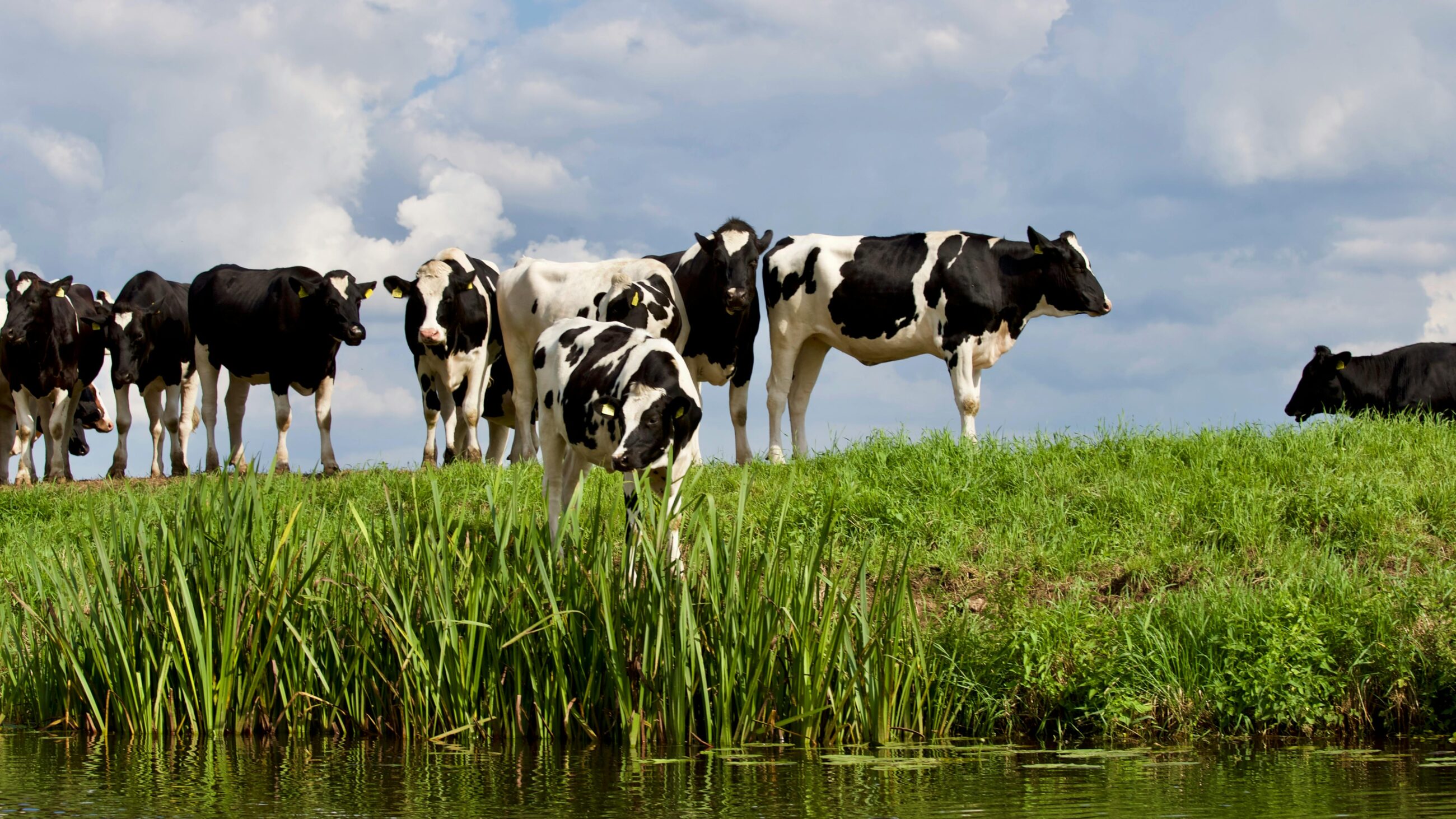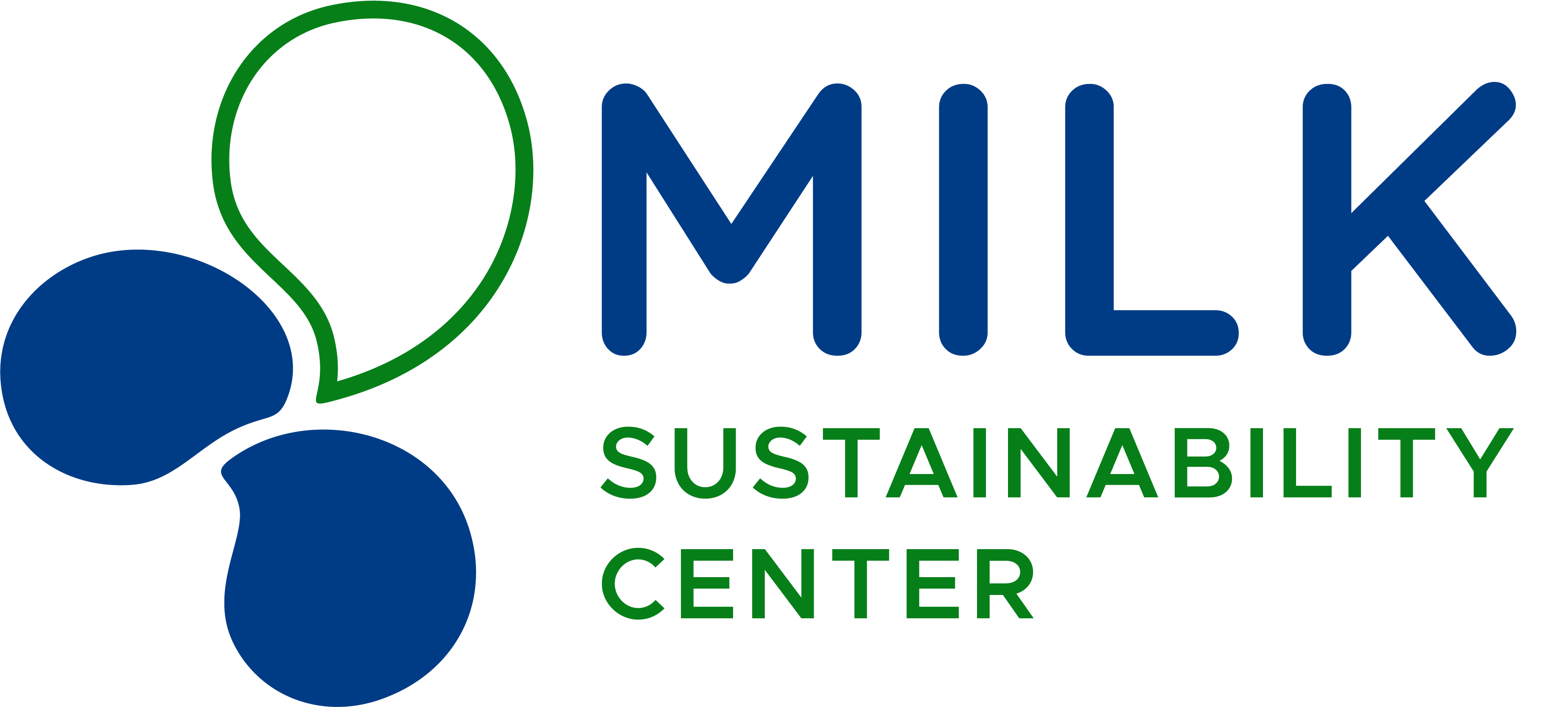CO2 equivalent and climate action: Why it matters to dairy farmers?
Climate change affects us all and agriculture is no exception. An important topic in this discussion is the parameter CO2 equivalent (CO2e), that is, the carbon dioxide equivalent. But what does this have to do with all our work as dairy farmers, and why is it particularly relevant to us?

Climate change means that temperatures on Earth are rising, and that is mainly due to the greenhouse gases that we humans emit into the atmosphere. These gases are responsible for the development of global warming. In 1997, the Kyoto Protocol established which gases are considered to be greenhouse gases. These include carbon dioxide (CO2), methane (CH4) and nitrous oxide (N2O)
These gases have different effects on the climate. Some, like CO2, stay in the atmosphere for hundreds of years, while others, like methane, disappear faster but are much more harmful in a short time.
To be able to compare these effects fairly, the “Global Warming Potential” (GWP) is used. It shows how much greenhouse gases influence the climate in each period (20, 100 or 500 years). At the global level, 100 years (GWP100) is the default. In this method, carbon dioxide is used as a reference gas and fixed by a factor of 1. All other gases are evaluated in relation to each other, i.e. expressed in carbon equivalent. For example, methane is classified as 21 times more harmful than CO2. This means that one ton of methane emitted, as 21 tons of CO2 equivalents, is reported internationally. This comparison, which shows all emissions in CO2e, will allow us to better understand and manage the overall climate impact of the different greenhouse gases
Why should I save greenhouse gases as a farmer?
There are many benefits to saving greenhouse gases. Firstly, farmers play an important role in the fight against climate change. By reducing emissions, we can help mitigate extreme weather events such as drought, heavy rain or heat episodes and continue to produce high-quality food.
Secondly, less greenhouse gases often mean more efficient agriculture. Methods to reduce methane, for example, can improve feed utilization and thus reduce costs. In addition, modern techniques can improve soil quality, which leads to better yields in the long term, or achieve a lower release of nitrous oxide through more efficient fertilization, while also reducing the production costs of the product unit. Thirdly, consumers and politicians are increasingly demanding sustainable products. Many consumers are increasingly turning to sustainably produced products, and subsidies for sustainable agriculture are also increasing. This means that those who reduce greenhouse gases can position themselves better on the market.
It is important to mention that the goal is always to reduce greenhouse gas emissions per product unit, because this is the only way to create long-term resilient agricultural systems

How can farmers contribute to reducing CO2e emissions?
To reduce CO2e emissions, farmers can adopt various strategies. One option is to switch to sustainable farming methods, such as crop rotation and the use of compost instead of chemical fertilizers, to make the soil healthier and more carbon-rich. Reducing the use of machinery through minimum tillage can also help to reduce energy consumption.
The integration of agroforestry systems, in which trees are planted on agricultural land, can also bind CO2 and promote biodiversity at the same time. The use of renewable energy, for example through solar panels on the farm, also helps to reduce operational emissions.
The reduction of methane is particularly important for dairy farmers. Dairy cows produce considerable quantities of this greenhouse gas. Measures such as optimized feeding, improved stall systems, feed supplements and optimized pasture management are therefore an important approach to reducing methane emissions.
In addition, the efficient use of operating resources such as fuel and fertilizers plays a decisive role in reducing the CO2e footprint. Finally, the efficient use of nutrients, for example through precise nutrient management and the correct use of organic and mineral fertilizers, also makes a significant contribution to reducing emissions and maintaining soil fertility in the long term. By linking farm and field data through the MSC and through conscious management and sustainable agricultural practices, farmers can make a significant contribution to reducing CO2e emissions..
Overall, it shows that the active use of CO2e and the reduction of greenhouse gases not only serves to protect the climate but driven by efficiency gains can potentially offer economic advantages. Sustainable agriculture is the key to the future, and the conscious use of CO2e is an important step in this direction.


Latest Milk Sustainability Center blogs

Future profitable dairy farming: get smart, go digital, be sustainable

Embracing Sustainability: Exploring the Definition and Benefits of Sustainable Practices in Dairy Farming


